Final Exam - Review - Professor Frazier PDF

| Title | Final Exam - Review - Professor Frazier |
|---|---|
| Course | Criminal Investigation |
| Institution | Johnson & Wales University |
| Pages | 4 |
| File Size | 73.3 KB |
| File Type | |
| Total Downloads | 67 |
| Total Views | 131 |
Summary
Professor Frazier...
Description
What are the differences between an interview and an interrogation? (6/7) -
Interrogation- in custody trying to pry information out of the suspect; looking for confession/admission Interview- just questioning; not in custody; looking or information; helps figure out the crime
Explain the differences between an emotional offender and a non-emotional offender and what kind of investigative techniques to use with each. (7) -
Emotional offender is one who is likely to experience considerable feelings of remorse regarding the crime. It is their understanding of the crime, suspect’s background, suspect’s previous experience or involvement in similar crimes and his or her body language Non-emotional- do not experience troubled conscience. May be more sophisticated and does not feel the need to answer the questions of the police.
There are three common defense mechanisms an offender (or investigator) may use during an interrogation to help make it easier for the defendant to confess. Describe them: Rationalization- plausible explanations that reflect favorably for the suspect Projection- somebody else did it Minimization- reduce the seriousness
What is the difference between a souvenir and a trophy when taken by an offender? (8) -
A souvenir is something that reminds them of the crime they committed A trophy is an award or their act of accomplishing something in their crime
What is crime scene profiling? What are the basic assumptions used for crime scene profiling? (8) -
CSP: analyze crime scene and crime to id major personality traits and behavioral characteristics Basic Assumptions: o Crime reflects the characteristics and personalities of the offender o Offender displays personality at the crime scene o The MO remains similar across all crimes o Signature is similar across all crimes
Psycholinguistics was used in the DC sniper case. What is it? (8) -
Analysis of written and spoken words
Identify the CRIME SCENE CHARACTERISTICS relative to a crime scene.(8) ORGANIZED SCENE -
DISORGANIZED SCENE
Organized: neat, evidence may be purposely placed, may not find remote evidence Disorganized: sloppy, evidence to be found, unorderly weapon may be at scene
Identify OFFENDER characteristics used to evaluate whether he or she may be: (8) ORGANIZED -
DISORGANIZED
Organized: same age as victim, normally under 35; married, probs no mental illness, does not live near crime scene, possibly a skilled profession, possible military service, out-going personality, previous arrests Disorganized: 16-39, same race, single usually, lives alone, frequently men, HS drop out, mental illness, no military
What is a Tip Line and how is it used? (9) -
A way by which citizens can provide information about crimes to the police via phone or internet o Created so citizens can report information leading to arrests
AMBER Alert (9) -
An alert designed to notify citizens of a child abduction; an acronym for America’s Missing Child Emergency Report
CODE ADAM (9) -
An alert designed to notify patrons and shoppers of a missing child in a store or other business
SILVER ALERT (9) -
Public notification system in US that broadcasts info about missing persons; especially senior citizens with Alzheimer’s, dementia, or other mental disabilities
-
The largest crime information network system in the US; maintained by FBI (National Crime Information Center)
NCIC (9)
Define digital evidence. (9) -
Crimes-related information retrieved from an electronic device
Define confidential informant. (9) -
Persons who assist law enforcement in an active ongoing capacity. Often in drugs investigations and often for some persons benefit
Manner of Death vs. Cause of Death (10) -
Manner of death is legal term to describe the way in which a person dies; whereas cause of death describes the actions and injuries that led to a person’s death
What are the 5 Manners of death? -
Accidental, suicide, homicide, natural, undetermined
Who determines the cause and manner of death? -
Medical Examiners
Be able to describe: Injuries from Blunt Force- hammer to head/pistol whip/baseball bat/punch Stab- deeper than a cut, more of a hole than a line, impression around the stab wound Laceration- a cut is slicing of the skin with straight edges and slight depth
Livor Mortis (general description and time frame) -
Pooling of blood o Starts at time of death and ends 8-12 hours after
Rigor Mortis (general description and time frame) -
Stiffening of muscles o 2-4 hours after death and fixed within 12-18 hours o 24-60 hours it dissipates
Algor Mortis (general description and time frame) -
Cooling of body o Drops 1.5-2 degrees every hour
Exsanguination -
Bleeding out; causing death
Post-mortem -
After death
Peri-Mortem -
During death
Pre-Mortem -
Before death
Analysis of Gun Shot wounds -
-
-
Entrance o o o Exit o o GSR
Direction Caliber Self-infliction Larger than entrance Star shape
Describe the ability and procedure to detect gunshot residue -
If the gun was close up it would have a black ring around the wound, can be rinsed water, other residue can be left behind depending how close
Define the elements of rape (11) -
Penetration, vagina/anus, another body part/object, oral penetration by a sex organ by another, without consent
Describe “lack of consent” and how it can be determined. -
Victim statement, injuries, weapon, over coercion/circumstance
What are the elements of drug facilitate sexual assault and what is the possible physical evidence? -
Legal/illegal substance administered by an offender to facilitate sex with unknowing, unwilling, or non-consensual person o Force not required Rape kit, condoms, drug tests
Define the elements of aggravated assault -
Attack on another Inflict serious injury
Define the elements of domestic violence -
Assaultive behaviors o Intimate, family, cohabitants
Explain the 4 types of child abuse -
Physical- hits the child Sexual- sexually assaults child Neglect Emotional
Describe the types of offenders who commit Child Sexual Abuse -
Male in 30s, adolescent family, feel inadequate, feel depressed and isolated, live by rigid rules and habits, deviant arousal patterns
Describe the types of offenders who commit Child Physical Abuse -
Increased stress, poorly developed coping skills, poor self-esteem, poor impulse control, depression/anxiety
Describe the “signature” of an offender. -
Not necessary to complete the act Expresses emotion/fantasy o Something the offender does almost every time at their crimes
Describe the elements of “robbery”. Describe:
Taking (attempting), from a person, by force/violence/threat/coercion, without permission
Street robbery- mugging Vehicle related robbery- carjacking Residential robbery- home invasion Commercial robbery- bank/convenience store Armed robbery- when suspect has a weapon
What are the actions of the offender used to understand the robbery modus operandi? -
Target, degree of planning, location
Describe the different approaches and departures a robber may use on his victim? -
Confrontation- verbal- violence for non-compliance Blitz- violence to gain control of victim first Con-distraction Grab and go- snatch theft Straight- clear intent Customer- purchase first
Define the elements of larceny -
Willful taking, property, possession of another, without consent
Define the elements of burglary -
Unlawful entry, structure, felony or theft o Evidence of Entry o Evidence of theft o Evidence of a felony o Without permission
Define the elements of arson -
Willful/malicious, burning/attempt, with or without intent to defraud, dwelling/house/public property, deliberately set for purpose of causing harm
Define the adversarial process by the job tasks of each actor in the court room. -
Prosecutor- direct examination Defense Attorney- cross examine; annoy/anger/badger, ask difficult or slanted questions, confuse and fluster, assumptions/guess Judge- referee, keeps court in order Jury- decides the verdict, listens in on the whole case
What is an expert witness? -
Person determined by the court- to have specialized knowledge relative to case
List the guidelines for testifying as an investigator in a criminal trial. -
Must be comfortable and competent as a witness to testify o Known info, mentally stable, consistent, prepared, communicate effectively...
Similar Free PDFs

Chem Final Exam Review
- 12 Pages

Final Exam - Review notes
- 92 Pages

Bio Final Exam Review
- 2 Pages

Final EXAM Review booklet
- 5 Pages
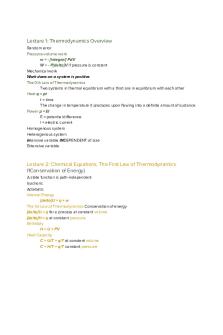
CHEM303 final exam review
- 4 Pages

Psychology Final Exam - Review
- 13 Pages
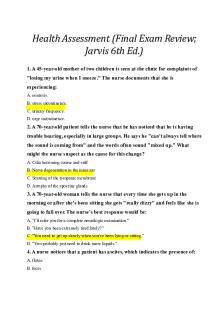
Jarvis Final Exam Review
- 12 Pages
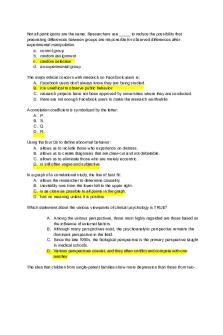
Final exam review
- 96 Pages
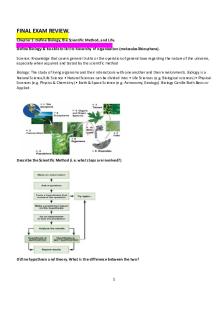
Final Exam Review
- 48 Pages
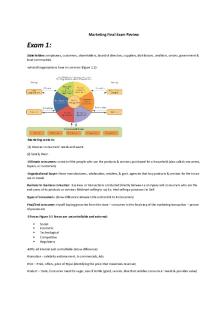
Marketing Final Exam Review
- 15 Pages
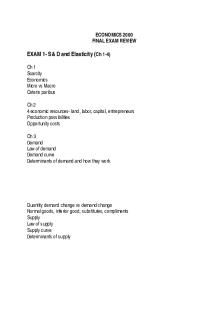
Final exam review
- 8 Pages
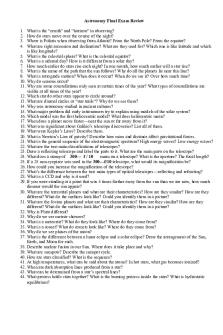
Astronomy Final Exam Review
- 2 Pages
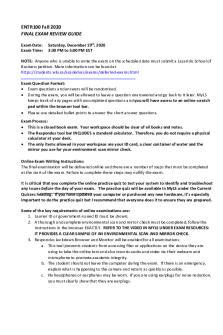
Final Exam Review Guide
- 4 Pages

Final exam review flsp4420
- 5 Pages

Theo Final Exam Review
- 16 Pages
Popular Institutions
- Tinajero National High School - Annex
- Politeknik Caltex Riau
- Yokohama City University
- SGT University
- University of Al-Qadisiyah
- Divine Word College of Vigan
- Techniek College Rotterdam
- Universidade de Santiago
- Universiti Teknologi MARA Cawangan Johor Kampus Pasir Gudang
- Poltekkes Kemenkes Yogyakarta
- Baguio City National High School
- Colegio san marcos
- preparatoria uno
- Centro de Bachillerato Tecnológico Industrial y de Servicios No. 107
- Dalian Maritime University
- Quang Trung Secondary School
- Colegio Tecnológico en Informática
- Corporación Regional de Educación Superior
- Grupo CEDVA
- Dar Al Uloom University
- Centro de Estudios Preuniversitarios de la Universidad Nacional de Ingeniería
- 上智大学
- Aakash International School, Nuna Majara
- San Felipe Neri Catholic School
- Kang Chiao International School - New Taipei City
- Misamis Occidental National High School
- Institución Educativa Escuela Normal Juan Ladrilleros
- Kolehiyo ng Pantukan
- Batanes State College
- Instituto Continental
- Sekolah Menengah Kejuruan Kesehatan Kaltara (Tarakan)
- Colegio de La Inmaculada Concepcion - Cebu
